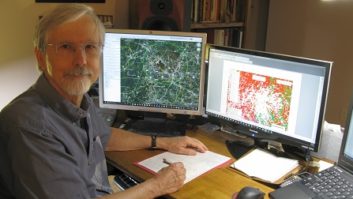FCC Acts on LPFM and Translator Rules
Apr 1, 2012 1:00 AM, by Lee Petro
Last month, the FCC released two Orders and a Further Notice of Proposed Rulemaking relating to the adoption of rules for low-power FM (LPFM) stations and FM translator stations. These steps were taken to implement the Local Community Radio Act of 2011 (LCRA), which directed the Commission to deal with long-pending FM translator applications (filed in the FCC’s last filing window for new translators, in 2003), and provide opportunities for new LPFM stations to be licensed to local communities.
As was discussed in the August 2011 column, the Commission has more than 6,500 pending FM translator applications filed in the 2003 filing window. The Commission proposed rules in July 2011 that would protect spectrum in urban areas so that it could be licensed for LPFM use, and proposed a cap on the number of pending FM translators one entity could prosecute.
In the Orders, the Commission mostly adopted the proposed rules. First, the Commission adopted its proposal to use LPFM channel “floors” to measure whether there was available spectrum for LPFM use. Specifically, the Commission stated it would deem a market to have spectrum available if there are:
? eight open LPFM channels in the top 20 radio markets;
? seven open LPFM channels in markets 21-50;
? six open LPFM channels in markets 51-100; and
? five open LPFM channels in markets 101-150.
In the “spectrum limited” markets, the Commission will require FM translator applicants to amend their applications to eliminate any preclusive effects that would limit the licensing of LPFM stations in the market. If an applicant is successful, the Commission will then complete processing of its application. If the applicant cannot eliminate the preclusive effects, or fails to amend its application, the Bureau will dismiss the application.
The Commission also announced that it would institute a cap of 50 applications for any entity that filed applications in the 2003 window, and further restricted entities to only one application in those markets where the Commission determined that spectrum is limited. The Commission directed the Media Bureau to open a 60-90 day window to permit entities with pending applications to select the applications they wish to have the Commission process. Subsequently, the Commission will process applications in the “spectrum available” markets and release a public notice of the mutually exclusive applications. These applicants will have an opportunity to reach settlement agreements and make minor changes to eliminate engineering conflicts. Also, the Commission now will allow all FM translators, including those licensed following the 2003 window, to rebroadcast AM stations.
In the second Order, the Commission took steps to implement the Local Community Radio Act requirement to eliminate FCC rules that were inconsistent with the LCRA, including the third-adjacent channel and Radio Reading Service protections.
Finally, the Commission issued a Further Notice of Proposed Rulemaking that seeks comment on several issues relating to the interference complaint process and the eligibility and ownership of LPFM stations. In particular, the Commission is seeking comment on extending eligibility for LPFM stations to the native nations, and whether to afford them additional credit during the comparative process for mutually exclusive applications.
The Commission is also proposing to tweak the comparative criteria to ensure that parties receiving credit for being local to the community maintain their eligibility status after the construction permit authorization is granted, and to give additional credit to applicants pledging to provide local programming service.
The Commission also sought comment on whether to eliminate the LPFM service that was limited to 10W operation, and instead adopt rules to create a LP-250 service that would permit LPFM stations to operate with 250W at 30 meter HAAT. One possibility would be for the Commission to impose geographic restrictions so that these LPFM services would be restricted from the main community in the top 100 markets. Another proposal was to permit exiting LPFM stations to upgrade their facilities to 250W upon a demonstration that they had been providing local service.
FCC Dateline

April 16, May 1 and 16: Stations in Michigan and Ohio continue running License Renewal Pre-Filing Announcements. Stations in Indiana, Kentucky and Tennessee continue running License Renewal Post-Filing Announcements.
June 1: Stations in Michigan and Ohio file License Renewal Application and EEO Program Report. Commence running License Renewal Post-Filing Announcements. Noncommercial radio stations in Michigan and Ohio file their Biennial Ownership Report (FCC 323-E).
Petro is of counsel at Drinker Biddle & Reath, LLP. Email: [email protected].
April 2012
Audio over IP for remotes, Radio Kansas rebuilds, the FCC rules on translators and LPFM, and Field Reports on the Inovonics INOmini 632 and Nautel NV40….
New Translators and Possibly Thousands of LPFM Stations
In March 2012, the FCC passed two report and order actions and a further notice of proposed rulemaking to do just that….








